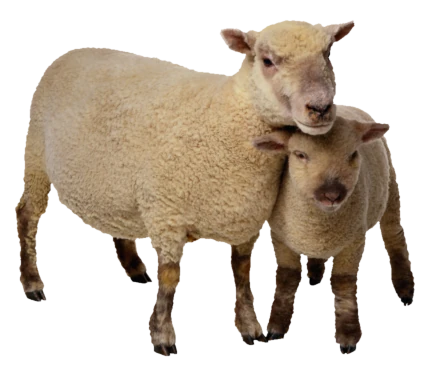By Frank Dixon
Doctors, other experts, and conventional wisdom often say that animal products are essential components of a healthy diet. This majority view implies that humans are omnivores. But what do our bodies say?
The China Study and numerous other international studies show that whole food, plant-based (WFPB) diets provide the optimal foods for humans, minimizing chronic diseases (which kill 75 percent of people in the US) and maximizing health, longevity, and vitality.
This article shows that humans are anatomical herbivores, not omnivores. That is why humans thrive on WFPB diets. The information in this article is based on my book, Sustainable Food Production and Diet.
Some people argue that humans historically ate animal products. Therefore, they must be natural and healthy. There are many reasons why humans would eat animal products when they are not the optimal foods for us. For example, as original people migrated north, they often ate animal products to survive because adequate plant products were unavailable. Also, because the nutrient composition of animal foods usually includes more fat, they are more calorie-dense, which may have been favorable for short-term survival.
Today, there is strong cultural pressure to eat animal products. Many people were raised on them. Religions often say that God put animals here for humans to use and eat. The US Dietary Guidelines say that animal products are part of a healthy diet. Food companies regularly publish biased research that shows animal products to be healthy. Medical training often teaches doctors that these foods are healthy.
All herbivores can digest and utilize some animal protein. As intelligent, higher life forms, humans can vary our behavior and diets. But just because we can survive by eating animal products, or enjoy eating them, does not mean that they are optimal, healthy foods for humans.
Anatomy trumps everything, including beliefs and food preferences. Anatomical features are observable facts. They objectively show the types of foods we and other creatures evolved to eat, and thereby thrive on. The following discussion shows that humans are herbivores by comparing the anatomical features of carnivores, omnivores, and herbivores.
Carnivores evolved to capture, kill, tear into the flesh of, and digest animals. Herbivores evolved to consume and digest plants. Omnivores eat plants and animals. But to eat animals, they must retain their ability to capture, kill, and digest prey. As a result, omnivores such as bears and raccoons are anatomically almost completely carnivores, with a few minor adaptations for eating plants.
Carnivores and omnivores have wide mouth openings relative to head size and jaw joints on the same plane as the teeth. The lower jaw cannot move forward or backward and has limited side-to-side motion. This strong, stable jaw is necessary for capturing, killing, and dismembering prey. Herbivores and humans have relatively small mouth openings and jaw joints above the plane of the teeth. This makes our jaws much weaker and therefore less effective for capturing and killing prey, but it does provide the front-to-back and side-to-side mobility needed to crush and grind fibrous plants.
Carnivores and omnivores have sharp, pointed, short front teeth for tearing flesh. Herbivores and humans have flat, long, shovel-like front teeth for cutting plants. Carnivores and omnivores have long, curved, sharp canines for capturing, killing, and tearing prey. Canines vary in herbivores. Some have no canine teeth. Other herbivores, such as hippos and some primates, have longer canines that are believed to be for defense. Human canines are short and blunt. They function like incisors (i.e., front teeth). Lastly, carnivores have triangular molars for cutting flesh; some omnivores have flat molars, like herbivores and humans, for crushing plants.
Carnivores and omnivores swallow food whole or simply crush it and have no digestive enzymes in their mouths. Herbivores and humans require extensive chewing and have digestive enzymes in their saliva. Carnivores and omnivores have wide esophagi that can handle whole chunks of meat. Herbivores and humans have narrow esophagi best suited for swallowing small, soft, thoroughly chewed balls of food. When humans attempt to swallow large chunks of meat, they risk choking.
Carnivores and omnivores have large stomach capacities (60 to 70 percent of the digestive system). Herbivores and humans have smaller stomach capacities (less than 30 percent of the digestive system). Meat, especially decaying flesh, often has abundant pathogens. Carnivores and omnivores have high-acid stomachs (about 1 pH) that kill pathogens, whereas herbivores and humans have low-acid stomachs (4 to 5 pH). No animal cooks food except humans. This innovation helps kill pathogens in meat and compensates for the lack of a high-acid carnivorous stomach.
Carnivores and omnivores have relatively short, smooth small intestines (3 to 6 times body length). Herbivores and humans have longer, pouched small intestines (10 to 12 times body length). The longer intestines of herbivores and humans evolved to slowly digest fibrous plant material.
Carnivores can eat high-fat foods with high cholesterol (i.e., animal products) with no negative health impacts. Carnivores, and many omnivores, have sharp claws for catching and tearing their prey. Herbivores and humans have flat nails or hooves. Humans are not instinctual carnivores. A child might pick an apple from a tree and eat it. But they would not chase down a small animal, kill it by biting it, and eat the flesh off its bones as carnivores and omnivores would do.
Focusing on the anatomical features that differentiate carnivores and herbivores, humans have virtually no similarities to carnivores and no differences from herbivores. The only similarities we have to omnivores are the parts adapted to eating plants, such as flat molars. Humans’ mouths, jaws, teeth, throats, and digestive systems have not evolved to capture, kill, tear, swallow, and digest animals. Some of our closest relatives, gorillas, consume an optimal diet of 97–100 percent plants.
The human ability to think, rather than anatomical features, enabled us to capture, cook, and eat meat. But anatomy, not tradition or intellectual capacity, indicates the optimal diet. Based on anatomy, humans are raw food herbivores. We evolved to eat raw plant foods. Significant variations from these optimal foods often will produce suboptimal health or illness.
Some Chinese and Ayurveda dietary philosophies say that humans are biochemically unique. Therefore, optimal diets should vary based on individual characteristics. But this is misleading. There are minor biochemical differences and other factors such as food allergies that indicate optimal diets should vary between individuals, but we mostly are the same. We all have essentially the same teeth, mouths, and digestive systems. None of these anatomical features evolved to eat animal products.
Anatomical features and extensive independent research comparing the health impacts of plant and animal products show that humans are herbivores. As a result, WFPB diets are the optimal diets for humans.

